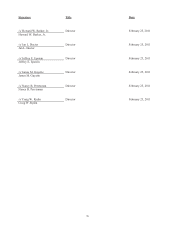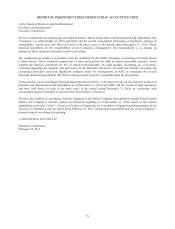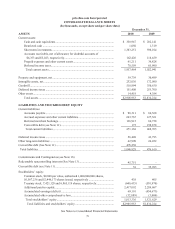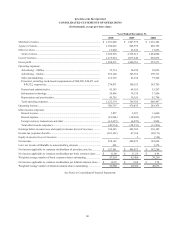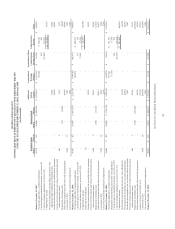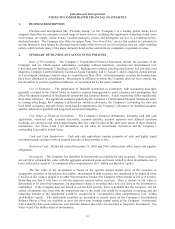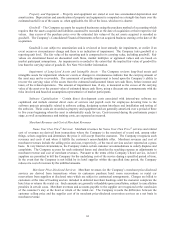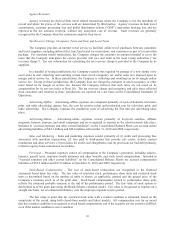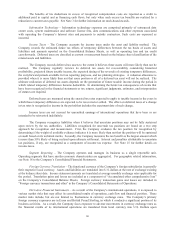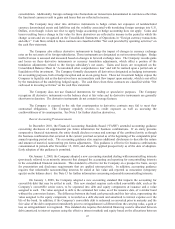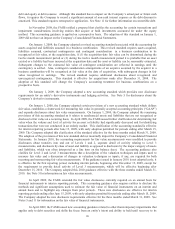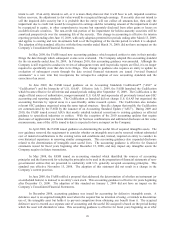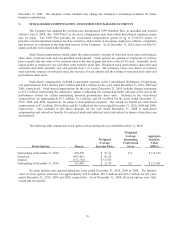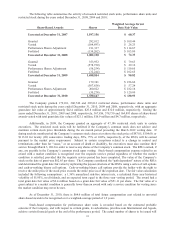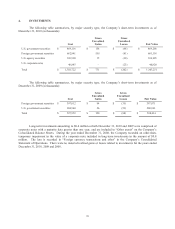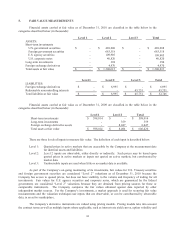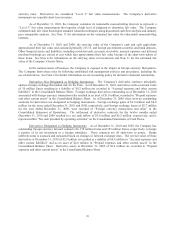Priceline 2010 Annual Report Download - page 159
Download and view the complete annual report
Please find page 159 of the 2010 Priceline annual report below. You can navigate through the pages in the report by either clicking on the pages listed below, or by using the keyword search tool below to find specific information within the annual report.85
Agency Revenues
Agency revenues are derived from travel related transactions where the Company is not the merchant of
record and where the prices of the services sold are determined by third parties. Agency revenues include travel
commissions, customer processing fees and global distribution system (“GDS”) reservation booking fees and are
reported at the net amounts received, without any associated cost of revenue. Such revenues are generally
recognized by the Company when the customers complete their travel.
Tax Recovery Charge, Occupancy Taxes and State and Local Taxes
The Company provides an internet travel service to facilitate online travel purchases between consumers
and travel suppliers, including airline ticket, hotel and rental car reservations, and sometimes as part of a reservation
package. For merchant model transactions, the Company charges the customer an amount intended to cover the
taxes that the Company anticipates the service provider will owe and remit to the local taxing authorities (“tax
recovery charge”). Tax rate information for calculating the tax recovery charge is provided to the Company by its
suppliers.
In a handful of taxing jurisdictions, the Company recently was required by passage of a new statute or by
court order to start collecting and remitting certain taxes (local occupancy tax and/or sales tax) imposed upon its
margin and/or service fee. In those jurisdictions, the Company is collecting and remitting tax on its margin and/or
service fee. Except in those jurisdictions, the Company does not charge the customer or remit occupancy or other
taxes based on its margin or service fee, because the Company believes that such taxes are not owed on its
compensation for its services (refer to Note 16). The tax recovery charge and occupancy and sales taxes collected
from customers and remitted to those jurisdictions are reported on a net basis on the Consolidated Statement of
Operations.
Advertising-Offline – Advertising-offline expenses are comprised primarily of costs of domestic television,
print, and radio advertising, agency fees, the cost for creative talent and production cost for television, print, and
radio advertising. The Company expenses the production costs of advertising the first time the advertising takes
place.
Advertising-Online – Advertising-online expenses consist primarily of keyword searches, affiliate
programs, banners, pop-ups, and email campaigns and are recognized as expense as the advertisements take place.
Included in “accrued expenses and other current liabilities” on the Consolidated Balance Sheets are accrued online
advertising liabilities of $64.3 million and $46.4 million at December 31, 2010 and 2009, respectively.
Sales and Marketing – Sales and marketing expenses consist primarily of (1) credit card processing fees
associated with merchant transactions; (2) fees paid to third-parties that provide call center, website content
translations and other services; (3) provisions for credit card chargebacks; and (4) provisions for bad debt primarily
related to agency hotel commission receivables.
Personnel – Personnel expenses consist of compensation to the Company’s personnel, including salaries,
bonuses, payroll taxes, employee health insurance and other benefits, and stock based compensation. Included in
“Accrued expenses and other current liabilities” on the Consolidated Balance Sheets are accrued compensation
liabilities of $54.6 million and $37.8 million at December 31, 2010 and 2009, respectively.
Stock-Based Compensation – The cost of stock-based transactions are recognized in the financial
statements based upon fair value. The fair value of restricted stock, performance share units and restricted stock
units is determined based on the number of units or shares, as applicable, granted and the quoted price of the
Company’s common stock as of the grant date. Stock-based compensation related to performance share units
reflects the estimated probable outcome at the end of the performance period. The fair value of stock options is
determined as of the grant date using the Black-Scholes valuation model. Fair value is recognized as expense on a
straight line basis, net of estimated forfeitures, over the employee requisite service period.
The fair value at grant date for restricted stock units with a market condition is estimated, based on the
complexity of the award, using both closed-form models and lattice models. All compensation cost for an award
that has a market condition is recognized as stock based compensation cost if the requisite service period is fulfilled,
even if the market condition is never satisfied.



